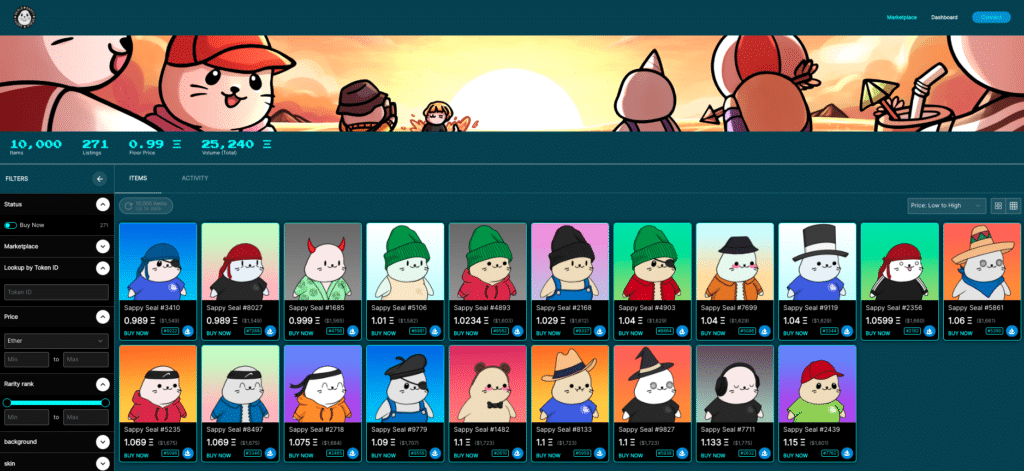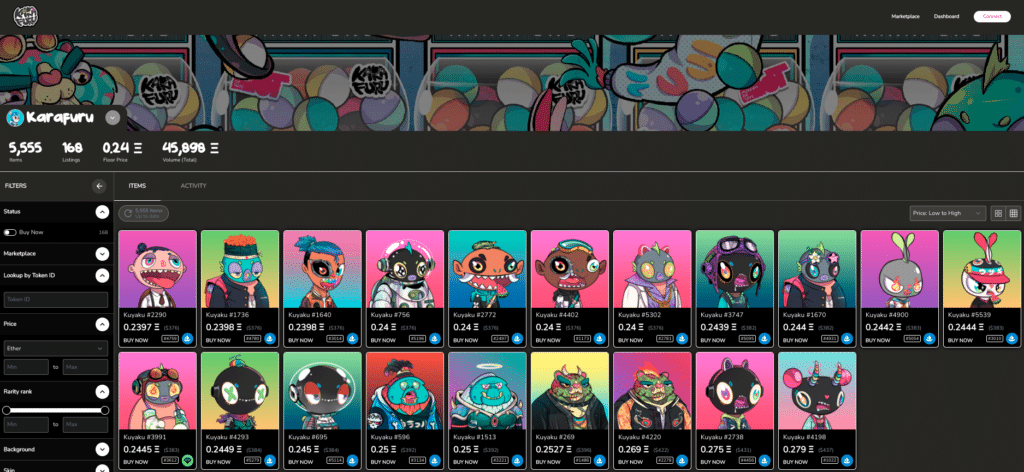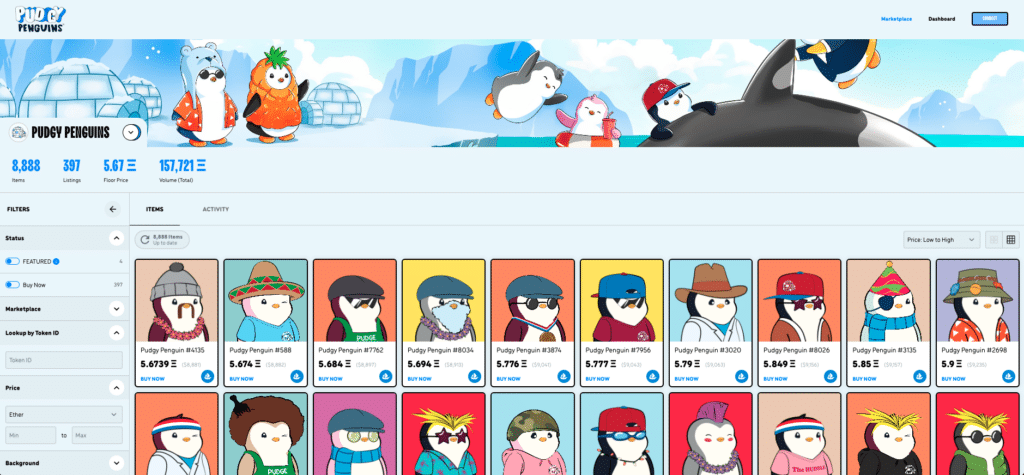In this interview, Matthew Liu, co-founder of Origin Protocol, gives his well-informed perspective on use cases for NFTs and how he sees the NFT industry unfolding in the coming years. This is the first interview in the series of two.
Introduction to Origin Protocol
Jonas Kasper Jensen (JKJ): What is Origin protocol, and what services do you provide?
Matthew Liu (ML): Origin Protocol has been building on Ethereum since 2017. We initially built a marketplace protocol allowing anyone to buy and sell anything on-chain. But over the years, we’ve altered our products, and now our two current business lines are Origin Story and Origin Dollar. Origin Story is an NFT platform, and its focus is to increase accessibility and utility for NFTs through white label NFT marketplaces.
We are working on creating a service where any collection owner can launch a marketplace that allows their collectors to buy and sell NFTs with each other. We also have a primary mint capability that enables people to launch new brand identities on our platform. For now, we’re focused on adding bespoke features to the protocol to adapt to unique use cases for NFTs, such as real estate and ticketing.
More recently, we’ve been building out a more robust ecosystem for Origin Story marketplaces. So beyond the provenance in the secondary marketplace sales, we started building deeper analytics and engagement tools. If you go to one of our marketplaces, you can see a lot of stats with top holders and some exciting charts and graphs that can be used to engage with the community. We will continue pushing down that vein to allow the communities for all these collections to start engaging deeper.

Recently we launched token-gated access to content, future mints, and things like that. We are also working on new features around staking NFTs and other formats that will again create higher engagement and retention with these communities. Our general thesis is that NFTs are still a very new technology. Even though they’ve been around for a few years, they’re still new in the context of the Internet.
JKJ: How is Origin Story different from other platforms in the NFT market?
ML: We see these NFT marketplaces like Opensea and Blur gaining traction. In e-commerce, they would be akin to marketplaces like Amazon. But in e-commerce, there’s also a class of platforms like Shopify and Squarespace that allow people to set up their storefronts and sell directly to consumers for lower fees and a more profound engagement experience. As NFTs develop beyond digital collectibles, the need for these custom storefronts will inevitably grow, and that’s what we’re building at Origin Story.
We allow creators to launch their storefronts and NFT ecosystems, create ways of engaging with their collectors and customers, and build more profound and richer experiences. And this will continue to happen as NFTs become more and more pervasive. A good analogy would be online gaming and mobile games. Games generate billions of dollars of revenue every year from in-app purchases. Should all these items that are sold in-app become NFTs, they need to be sold within the individual apps and offer bespoke customer experiences.
The reason for NFTs uniqueness
JKJ: What problems are NFTs solving, and why do you think they were invented in the first place?
ML: I think a lot of people today have a misunderstanding of what NFTs are and what they can be used for. They see the initial use case, which is expensive digital art or profile picture NFTs. A lot of people are rightfully thinking: What is this? Why is there any value to this? Why are people trading this? Is it just a speculative bubble? The answer is that part of it is speculation. But, the other part is that we are still in the early stages of a huge digital transformation that will revolutionize the Internet.

To me, NFTs are unique for a couple of reasons. NFTs are new primitive building blocks that allow these new sets of paradigms to be built in web3. NFTs allow for true digital ownership and true digital scarcity through digital provenance, which is tracking ownership. NFTs are also interoperable.
The standards created around NFTs allow them to be held in different wallets, traded on different exchanges, and displayed in different browsers. That interoperability and traceability mean these digital assets will have a larger audience and higher liquidity. The analogy that I like to use is that NFTs are to Web3 what HTML was to the web in the early beginnings of the Internet.
When HTML web pages first came out, many critics and naysayers would say: What is the point of this? Why do I need an ugly web page with blinking fonts when I can read the newspaper to get my news? Why would I post the message to my web page? I can write a letter. I can call my friends on a physical phone, and indeed, no one’s ever going to buy anything on a web page because you have to see the physical product before you buy it.
There were a lot of skeptics. But as the technology evolved and people built more on top of these building blocks of HTML web pages, more and more use cases were created. And so fast forward a few years, and then you now have use cases like blogs with user-generated content.

And guess what? E-commerce exploded over a couple of decades, and now Amazon is one of the world’s largest companies, with most of the markets, at least in the Western world, addicted to it. HTML industries include streaming with well-known companies like Netflix and YouTube and social networking with giant companies like Facebook, Instagram and TikTok.
Emerging NFT use cases
JKJ: Can you name a few use cases of NFTs that you think are especially interesting?
ML: I think NFTs are these new building blocks that unlock a lot of new use cases that will take five to ten years to manifest. Some examples of NFT use cases could be that NFTs allow verification that you own a specific digital asset and purchased it for a particular amount. This means that you can inscribe a financial value to a digital asset. You can also see how many of those NFTs exist. You’re also able to see the relative scarcity of an NFT; these are fascinating properties.
Fast forward ten years from today, and NFTs will wrap all types of assets, whether online or offline. We have already seen some fascinating examples of both asset types. The digital art NFTs exploded in 2021 with NFT works from, for instance, Beeple and PAK. That was the initial surge of NFTs as we know them today.
There will likely be a massive category of NFTs in gaming. Imagine if you’re playing tomorrow’s Fortnite or a virtual reality-like experience powered by Apple. In this experience, you have a digital sword and armor. Today, most games put those assets in a closed circle within the game ecosystem. You own those items and only play them with the games they were made for.
But now imagine your avatar, sword, armor, or whatever it may be were transferable across experiences. You can use the same digital items across VR worlds, social media, and games. That’s extremely powerful. As more and more people spend time in the metaverse, especially younger generations, digital items will be an increasingly large share of GDP versus physical items. Of course, that’s going to take a while to play out.
Read other stories: PlayMining GameFi Platform Unveils Revolutionary “Product Placement NFT” Advertising Solution
Multiverse NFT Standard approved on Ethereum to Enhance Web3 Assets Interoperability


